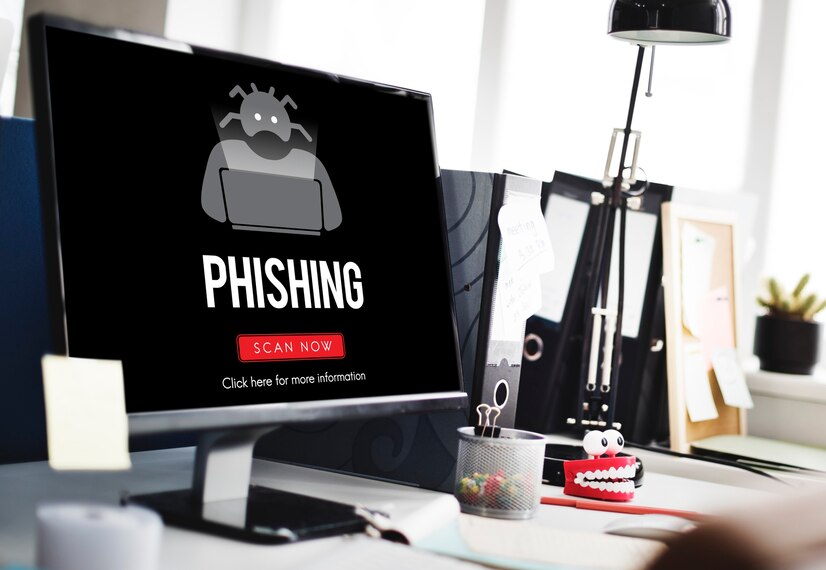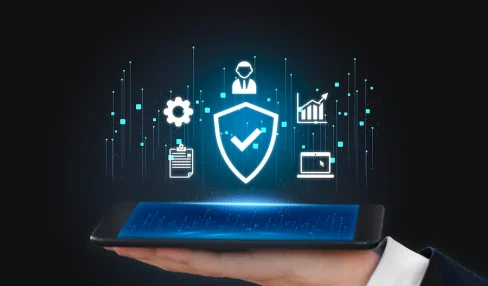Navigating The Digital Seas: The Importance Of Phishing Awareness Training
5 Mins Read
Published on: 29 November 2023
Last Updated on: 09 November 2024

toc impalement
In an era where technology is an integral part of our daily lives, the risk of falling victim to phishing attacks has never been higher. As cyber threats become more sophisticated, individuals and organizations alike must equip themselves with the knowledge and tools to navigate the digital seas safely.
Hence, this is where phishing awareness training emerges as a beacon of defense against the rising tide of cybercrime. In this comprehensive guide, we will be navigating phishing awareness training and its significance. So, without further ado, let’s get started with the article.
What Is Phishing Awareness Training?
A training campaign that enlightens end users of particular phishing threats is called phishing awareness training. Effective training on phishing awareness typically implements byte-size modules where a user learns about multiple phishing scenarios. It also helps users appreciate the influence of the threat and find ways to protect themselves.
The training also includes a phishing simulation where they get the freedom to assess and measure their skills. It simply lets them spot warning signs and report any kind of phishing to safe surroundings.
The Significance Of Phishing Awareness Training
Reports indicate that 52% of employees are of the opinion that their job is not at all related to cyber security. However, they need phishing awareness training, irrespective of the nature of their job. Let’s see the importance of phishing awareness training:
1. Understanding The Phishing Landscape:
Phishing attacks are no longer confined to poorly crafted emails that are easily identified. Additionally, cybercriminals have evolved their tactics, employing highly convincing messages and leveraging various communication channels. Phishing awareness training is the compass that helps individuals recognize the diverse forms that phishing can take, from emails and text messages to social media and beyond.
2. Building A Human Firewall:
The strongest defense against phishing is an educated and vigilant workforce. Phishing awareness training empowers employees to become human firewalls capable of identifying as well as thwarting potential threats. By understanding the red flags and adopting a skeptical mindset, individuals become an essential line of defense in the ongoing battle against cyber threats.
3. Realistic Simulations For Practical Learning:
Phishing awareness training goes beyond theoretical knowledge by incorporating realistic simulations. These simulations mimic actual phishing attempts, allowing participants to experience firsthand the tactics employed by cybercriminals. This hands-on approach enhances the effectiveness of the training. Further, it ensures that individuals are well-prepared to identify and respond to phishing attacks in real-world scenarios.
4. Staying One Step Ahead:
Cybersecurity is a constantly evolving landscape, and so is phishing. Training programs are designed to stay ahead of the curve. It provides participants with the latest insights into emerging threats and attack techniques. By staying informed and proactive, individuals can adapt to the ever-changing nature of cyber threats. This makes them less susceptible to manipulation.
5. Fostering A Culture Of Security:
Phishing awareness training is not a one-time event; it’s a continuous process that contributes to building a culture of security within an organization. When cybersecurity becomes ingrained in the organizational culture, employees are more likely to adopt security best practices in their daily activities, creating a resilient defense against phishing attacks.
6. Protecting Personal And Professional Domains:
Phishing doesn’t discriminate between personal and professional realms. Individuals often use the same devices for both work and personal matters, making it crucial to extend phishing awareness training beyond the workplace. By educating individuals about the risks they face in their personal digital lives, organizations contribute to creating a more secure online ecosystem for everyone.
7. Enhancing Employee Well-Being:
In an organization, happy people are most productive. There are so many studies to prove this. You might have a job focusing on the risks encompassing your organization.
However, cybersecurity threats do not remain confined just to the workplace. Efficient cybersecurity awareness training provides threat prevention threats to both the organization and its people.
Phishing Simulation Essentials Needed In Training
Simulating phishing is a great way to test the skills of your employees and calculate their progress. A test offers data where employees are baited by phishing emails and tapping on the corresponding links. There are 3 basic phishing simulation steps included in the training:
-
Acquiring Buying-In From Internal Leaders
For starters, to make a good phishing simulation, approval must be obtained from senior management. Inform some people about handling calls from people who complain about phishing texts. A user’s reaction should remain the same after detecting a phishing message.
At the time of simulations, you might not have to notify users that it is actually a test. Finally, inform the IT department who is handling these details.
-
Crafting An Actionable Strategy
Second, comes planning; curate a plan that includes not only sending texts but also how your employees respond to them. Make sure not to send them a lot of texts all at once. Instead, gather relevant statistics and reports to keep your strategy ahead.
Refrain from sending phishing emails at once to the entire organization. This might cause suspicion. Rather, send them out to just some departments and check the responses.
-
Implement Data-Driven Insights
Finally, track open rates of email, attachment downloads, and information disclosure. Try drawing reports on the total number of users who fall for these phishing attacks and how many report these incidents.
The phishing simulation data is crucial to growing your training program. It provides you with a leadership insight into behavior change initiatives. Your company can easily optimize this intel for the purpose of fine-tuning long-term strategies.
The Bottom Line
In conclusion, phishing awareness training is not merely a checkbox in the cybersecurity checklist. It is the key to fortifying the human element against the pervasive threat of phishing attacks. As technology continues to advance, investing in the education and empowerment of individuals is the cornerstone of a robust cybersecurity strategy.
By raising awareness and fostering a collective commitment to security, we can navigate the digital seas with confidence. As a result, this safeguards ourselves and our organizations from the perils of phishing.
Read Also:


















Comments Are Closed For This Article